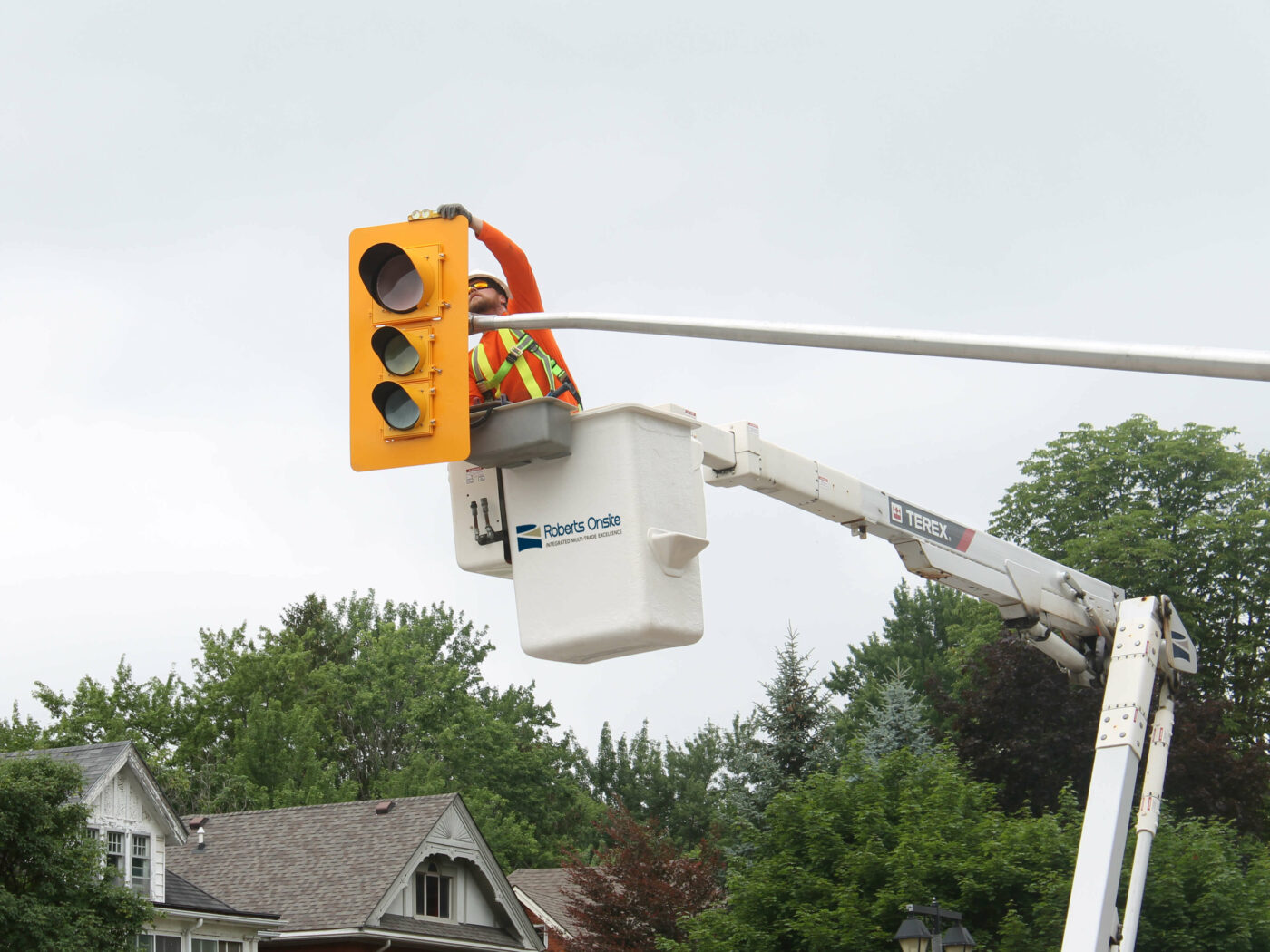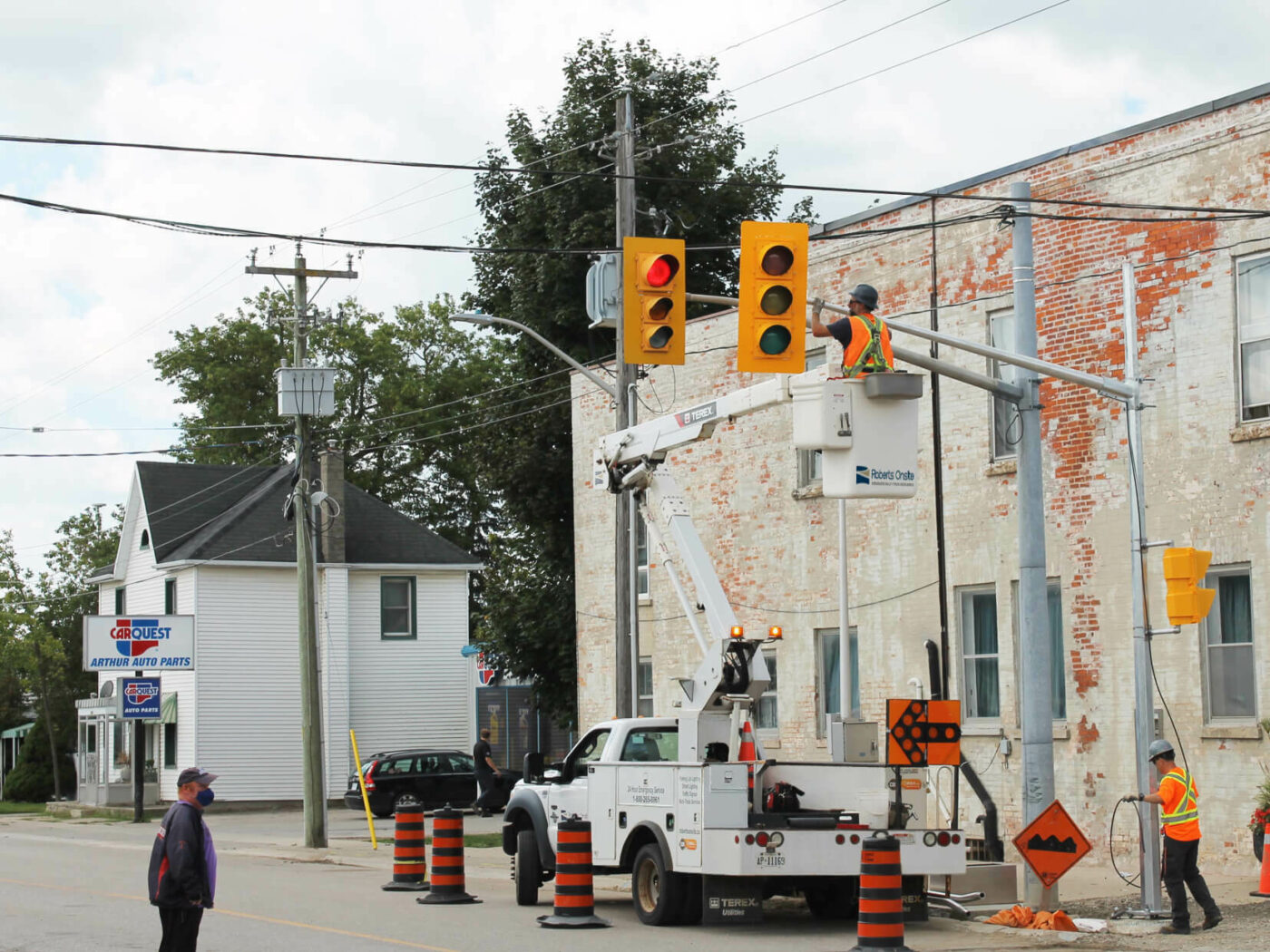Pulling up to a traffic signal today is commonplace, but in 1868, it was a revolution to see an automated traffic light in Parliament Square in London, England. Today, traffic engineers can optimize traffic signal controllers to reduce traffic, avoid gridlock, and make roadways more efficient.
Outdated traffic signal timing is responsible for 10 percent of all traffic delays, and in cases of severely outdated timing, adaptive systems can improve times by up to 50 percent. It’s all about reducing travel times and eliminating intersection delays. Along with smart traffic solutions, intersection improvements are one key factor in improving daily traffic flow in urban centres.
Installing adaptive traffic signal controls
Have you ever sat at a traffic light seemingly forever while the other direction of traffic appears to be flowing freely? That’s an example of inefficient traffic signals. In a perfect scenario, traffic control services would adapt to conditions in real time to keep commuters moving through the city.
Not only do adaptive traffic signal controls adjust on the fly, but with the help of machine learning artificial intelligence, control traffic lights can also anticipate traffic congestion and bottlenecks before they happen.
Algorithms analyze data to forecast issues and adjust traffic light timings depending on the time of day, the day of the week, or even specific patterns happening over the course of the month and specific seasons.
Traffic congestion costs everyone, from surrounding businesses to commuters. More time in the vehicle means less time spent at the office, and that becomes costly to a company’s bottom line.
Implementing pedestrian and cyclist-friendly infrastructure
A municipality dedicates a significant portion of its resources to building optimal traffic flow for vehicles, but it also considers the safety of pedestrians and cyclists and strives to provide efficient infrastructure for them.
Advanced crosswalk signals and countdown timers are ideal solutions for pedestrians who need to navigate these busy intersections on a daily basis. Artificial intelligence can also be used to predict the behaviours and patterns of pedestrians.
Improving pedestrian flow is not only optimal for people on foot but also for the surrounding commuters.
Cyclists are another significant subset to consider when creating the ideal intersection. It all starts with implementing dedicated bike lanes for cyclists and specific traffic signals for those on bikes. With the proper control traffic light services, pedestrians, cyclists and motorists can all live in harmony.
Public transportation integration with the grid
Whether by bus, subway or streetcar, public transportation is always an essential factor when considering traffic control services for an urban area. Ideally, the optimal public transportation system is reliable and efficient for all users.
By giving Transit Signal Priority (TSP), public transportation vehicles receive priority at intersections to minimize delays in travel time. Integrated GPS systems also relay information to traffic control systems to provide critical updates.
Ultimately, this helps streamline operation for public transportation vehicles to keep them on schedule, regardless of traffic conditions around them.
Prioritizing emergency vehicle signal pre-emption
In an emergency, time is always the most crucial variable. The sooner an emergency vehicle can reach its destination, the better the chance of recovery. Similar to public transportation integration, intersections can also prioritize emergency vehicles' traffic flow.
Advanced systems allow emergency vehicles to pre-empt traffic signals to get through intersections safely and decrease response times for patients in need.
Traffic signal intersection improvements by Roberts Onsite
There’s always a better way to make intersections and travel work better in any city. Trust Roberts Onsite to provide you with the optimal control traffic services solution for your municipality.
Our team offers around the clock 24-hour service and maintenance for all traffic intersections and streetlight repairs. Our team has the latest equipment and knowledge to complete your traffic signal and street light installation.
To learn more about our experience and expertise with installation services for smart traffic control, contact Roberts Onsite about smart traffic signal integrations.




